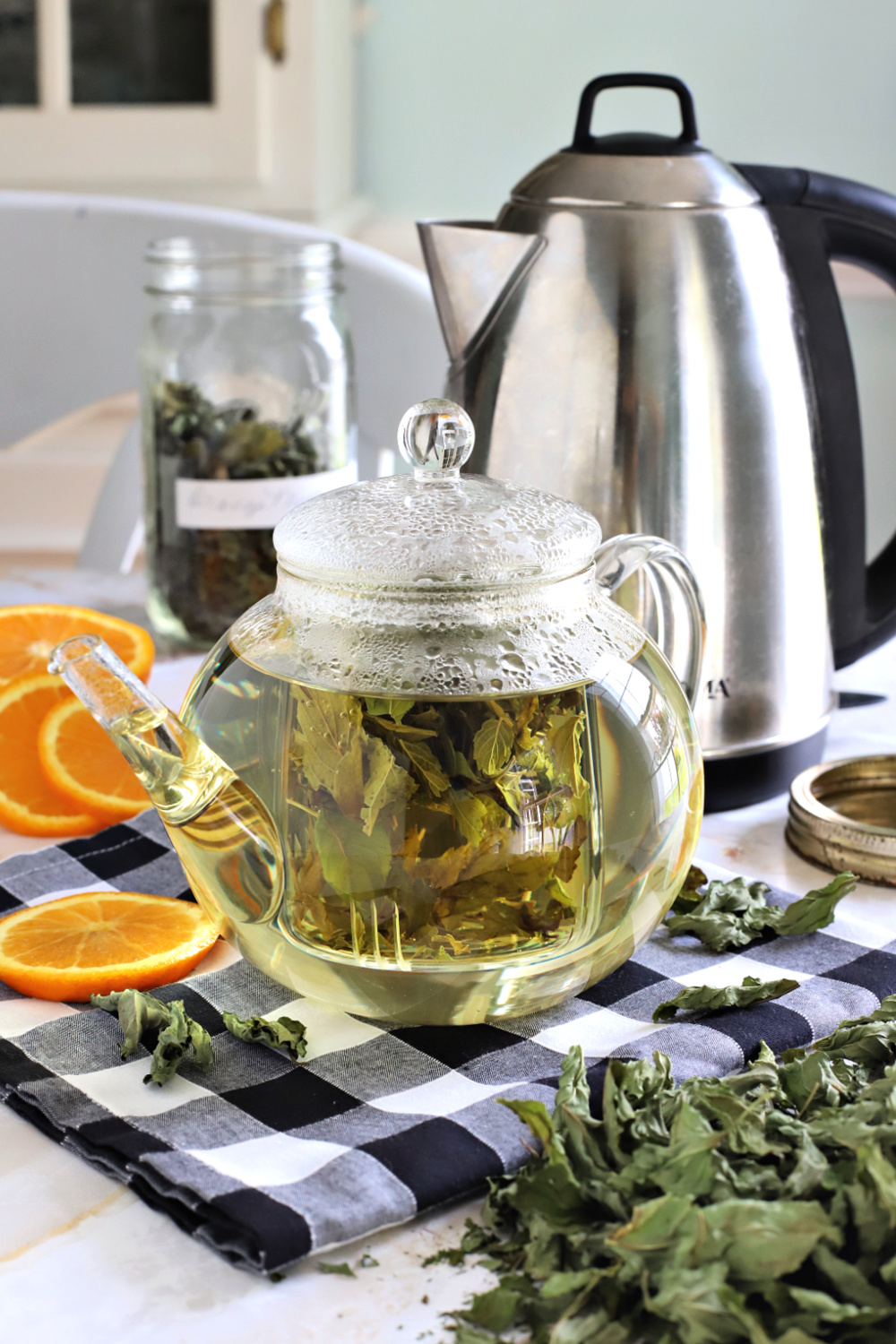 I love sharing simple ideas from my little herb garden. Like this lovely flavored orange mint tea. It is a versatile plant, and simple to harvest and dry. Let me tell you more about this easy-to-grow herb.
I love sharing simple ideas from my little herb garden. Like this lovely flavored orange mint tea. It is a versatile plant, and simple to harvest and dry. Let me tell you more about this easy-to-grow herb.
Grateful Prayer Thankful Heart is a participant in the Amazon Services LLC Associates Program, an affiliate advertising program designed to provide a means for us to earn fees by linking to Amazon.com and affiliated sites. We will only recommend products we use, love or think are informative and helpful.

About the herb orange mint
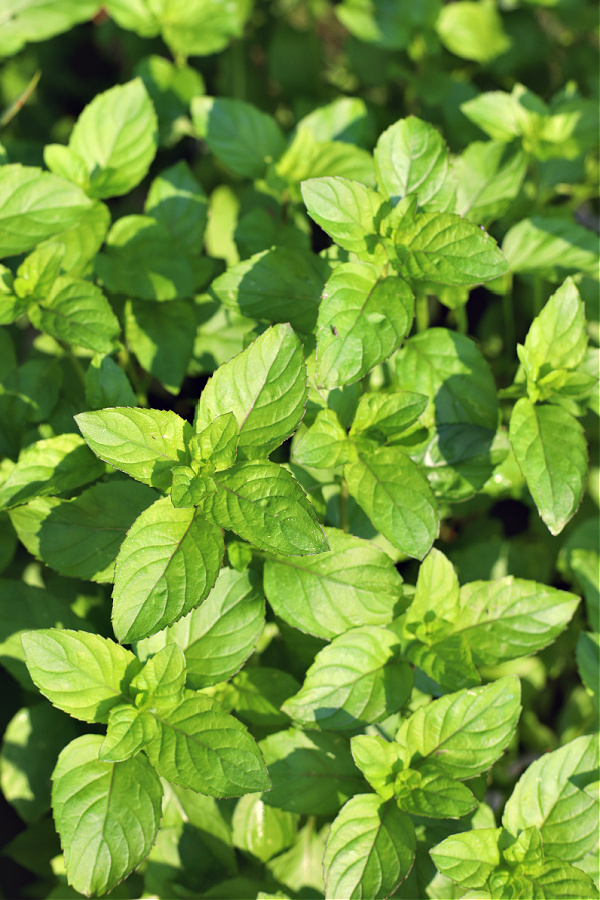
Orange mint growing in a pot in my herb garden
Orange Mint is a perennial herb with very fragrant, toothed leaves. It is a citrus-favored mint hybrid and a relative of peppermint. Native to the Mediterranean region and popular throughout Europe and the world.
Mint was used by the ancient Egyptians as a digestive aid, and by the Greeks and Romans for flavoring in sauces and wines. Around the 13th century, people from Iceland chewed mint to help in the whitening of teeth, which is the origin of the mint flavor being used to freshen breath and in toothpastes.
Here is an interesting fact about mint you might not have noticed – the plant has square stems. There are a handful of other plants that also have square stems, but that shape is largely a hallmark of the mint family.
Health benefits of mint
It is suggested that mint can be useful as health remedies such as aiding digestion or relieving headaches. I haven’t tried it, but read it can be used to relieve a tension headache by applying a compress of mint leaves to your forehead. Rubbing the oil on your temples may relieve a headache. Mint can also help in easing queasy stomachs, calming stress and anxiety, and promoting restful sleep.
But always use caution and be wise by seeking the advice of professionals in regards to using herbs for medical reasons.
How to grow orange mint
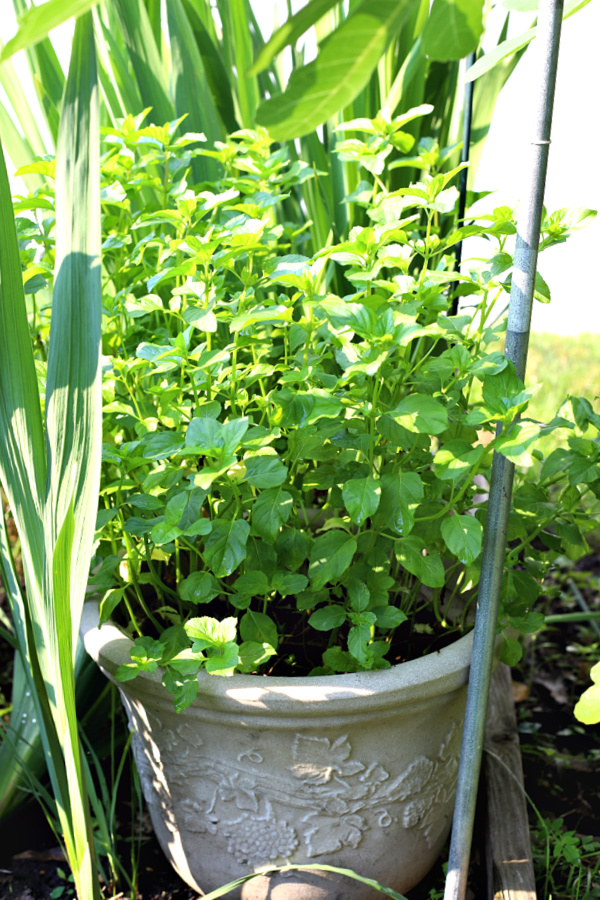 Orange mint, like all mint varieties, is a vigorous grower and can overwhelm a garden if they’re allowed to. It is a good idea to grow mint in a pot or container to keep it in check.
Orange mint, like all mint varieties, is a vigorous grower and can overwhelm a garden if they’re allowed to. It is a good idea to grow mint in a pot or container to keep it in check.
My plant is in a big pot sitting at the edge of my herb garden kind of haphazardly snuggled among the gladiolus. If you prefer, the pots or containers can be sunk down in the soil giving the appearance of a regular garden bed. The important thing is to prevent the roots from becoming invasive and spreading out beyond their limits. Otherwise, you will find the mint popping up everywhere, as I have learned from experience. Mint usually dies back in the winter but comes back in spring.
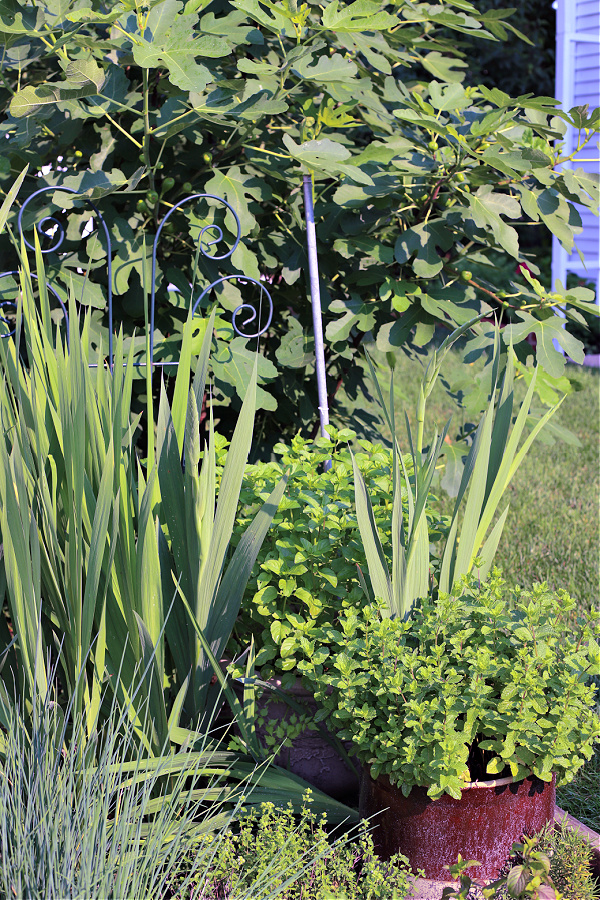
A pot of orange mint behind a pot of spearmint growing in a small herb garden
Where to plant Orange mint
Choose a location where the mint will get lots of sun. It grows best in full sun, but it can tolerate partial shade. It prefers rich, moist, clay-like soils that are a little acidic.
Mint is a perennial in zones 4 to 11. In other areas it is best grown as an annual or potted and transported indoors for the winter. Although Orange Mint is a perennial, its quality wanes after 3 to 5 years and should be replaced.
During the growing season, pruning back the orange mint plant will help to keep it at manageable size and produce a higher quality yield.
Watering Orange Mint
Orange Mint is not drought tolerant and requires consistent moisture. In a pot, water when the top inch of the soil becomes dry. Ideally, mint prefers a moist but well-drained site. Using a light mulch will help keep the soil moist and keep the leaves clean.
In mid to late summer, mint will produce spiked flowers in pink and white. Trimming these before the buds open will keep the plant compact and manageable. If you prefer, leave the spikes as they are very good for attracting butterflies
Propagating orange mint
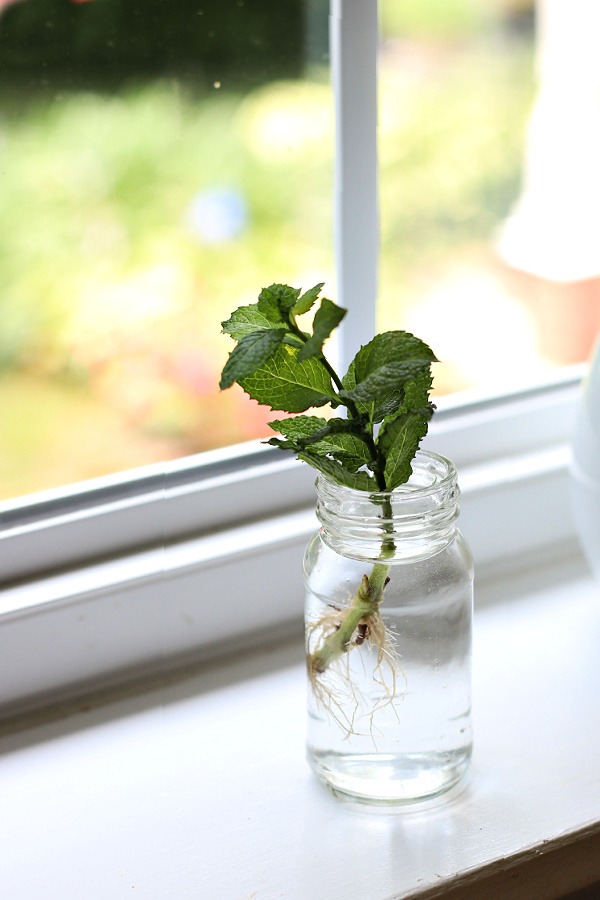 It is easy to increase your mint plant collection or to share with a friend. You can simply dig up a small rooted stem and replant it in it’s own pot or place in the garden. I prefer to cut a 3-5-inch tip from from an established plant and root it in a glass of water. Within a week or two, the cutting will have roots and be ready to pot up.
It is easy to increase your mint plant collection or to share with a friend. You can simply dig up a small rooted stem and replant it in it’s own pot or place in the garden. I prefer to cut a 3-5-inch tip from from an established plant and root it in a glass of water. Within a week or two, the cutting will have roots and be ready to pot up.
Harvesting orange mint
Frequent harvesting is the key to keeping mint plants at their best. Young leaves have more flavor than old ones. Although fresh is best the sprigs keep for a few days in a glass of water.
To harvest your mint, you can also just pick the leaves as you need them. You may opt to harvest most of the plant at once, clipping away up to 2/3 of the length of the stems, or you may clip away only what you need. For the best potency of flavor, harvest just before the mint flowers. It’s aroma will be at its peak.
Mint plants can be grown indoors in a sunny exposure for fresh leaves throughout the winter.
Drying orange mint for tea
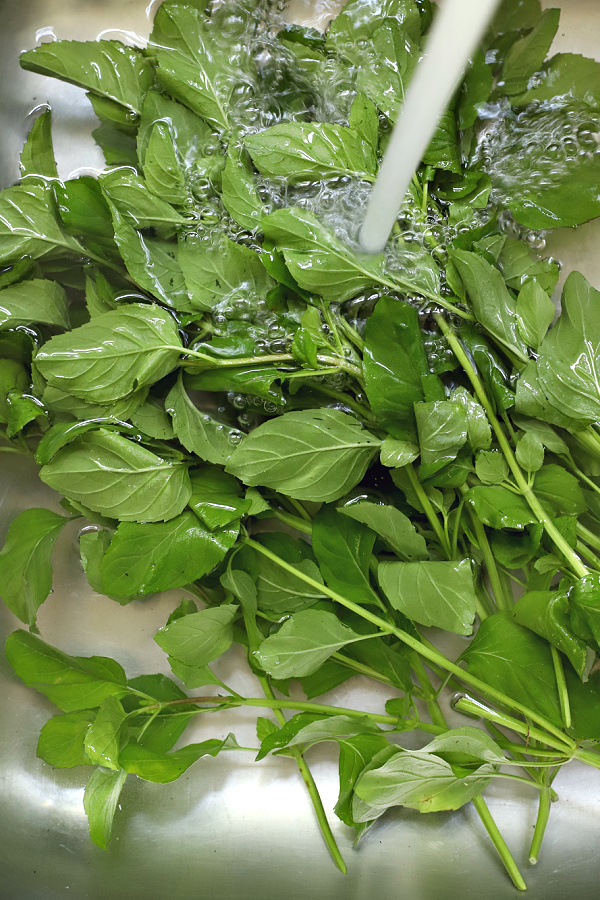 Cut the stems from the plant and rinse in cold water, swishing until all dirt and debris is removed.
Cut the stems from the plant and rinse in cold water, swishing until all dirt and debris is removed.
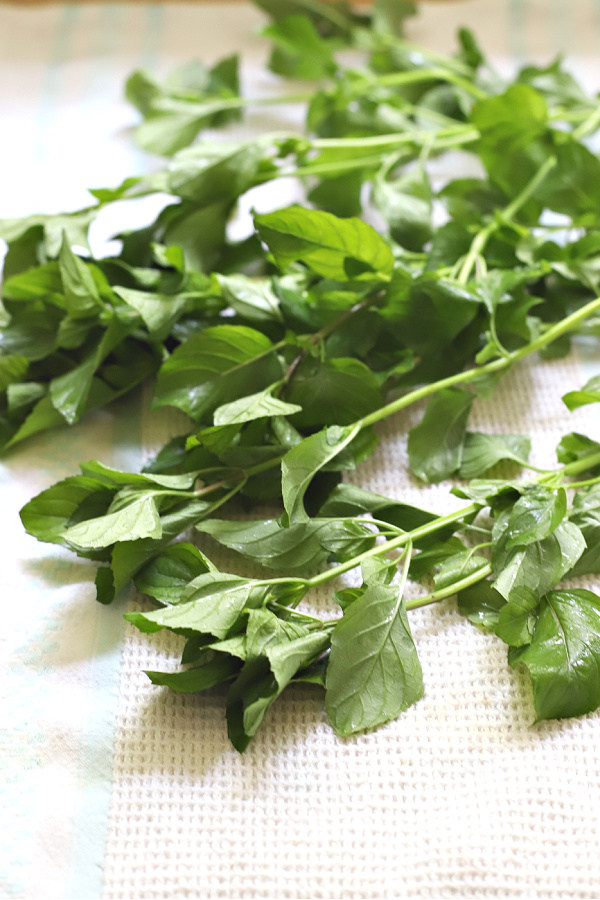 Place the washed mint stems on a towel and allow the excess water to dry for a couple of hours.
Place the washed mint stems on a towel and allow the excess water to dry for a couple of hours.
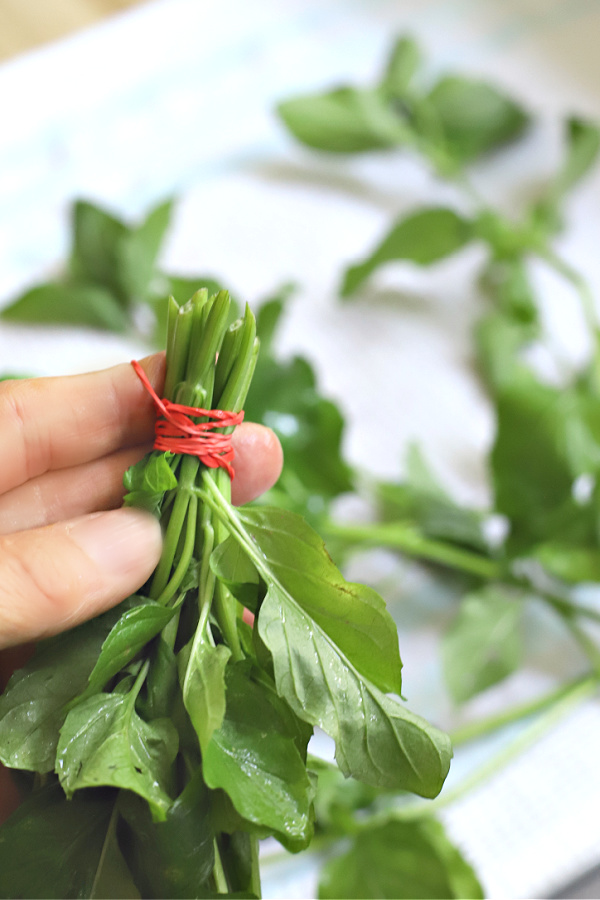 Gather a small group of stems and bind together using a rubber band and with the last wrap, attach to a hanger. A bent paperclip works if your hanger doesn’t have clips or hooks.
Gather a small group of stems and bind together using a rubber band and with the last wrap, attach to a hanger. A bent paperclip works if your hanger doesn’t have clips or hooks.
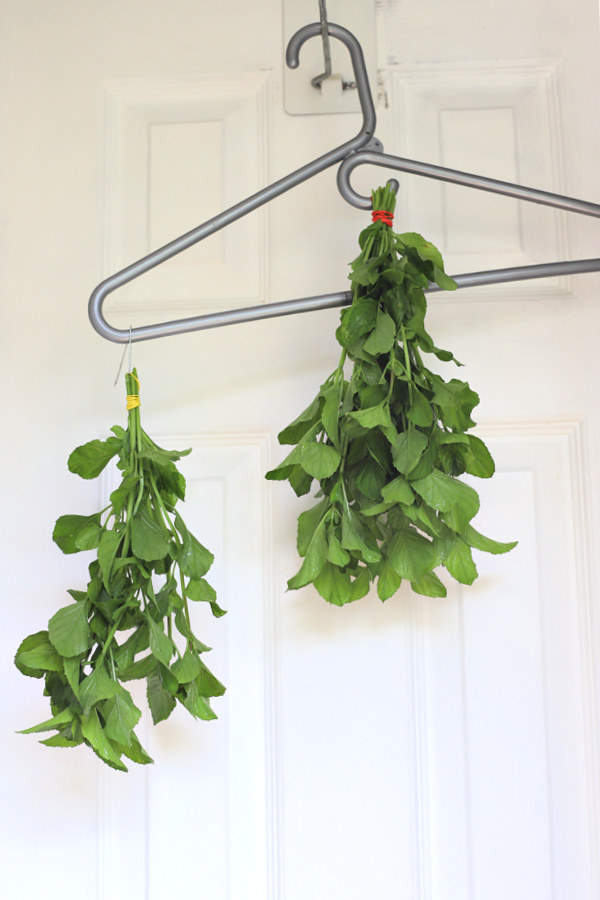 Hang the mint upside down in a warmish, dry, dim, and airy place. I place mine in our hot-water heater closet. Hanging the mint upside down will force the flavorful and aromatic oils to travel into the leaves, rather than gathering in the stems.
Hang the mint upside down in a warmish, dry, dim, and airy place. I place mine in our hot-water heater closet. Hanging the mint upside down will force the flavorful and aromatic oils to travel into the leaves, rather than gathering in the stems.
The dried leaves
 After a week or two, the mint should be dry.
After a week or two, the mint should be dry.
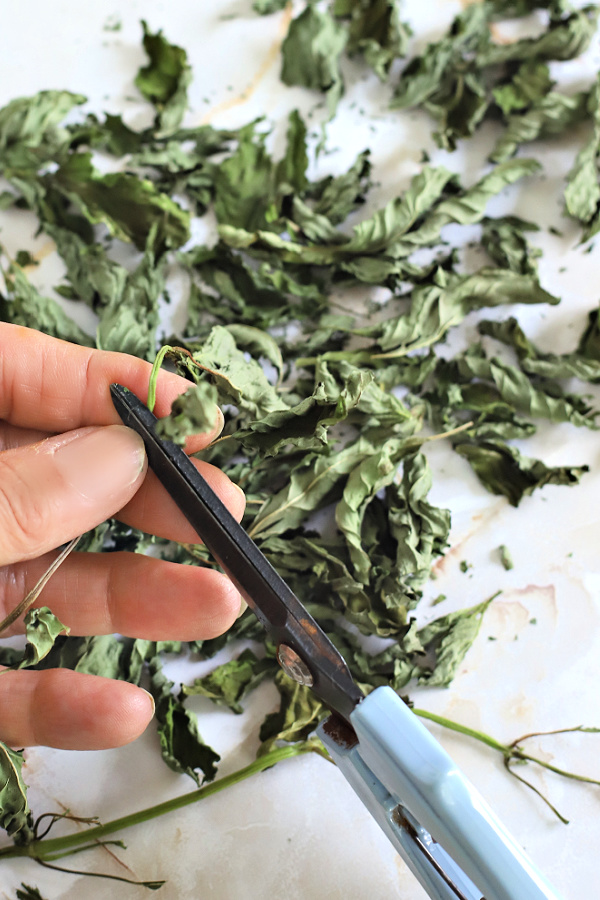 I prefer to snip the leaves from the stems but you can hold the tip of the stalk in one hand and run your other hand downward causing the leaves to fall off. I find the leaves crush more this way than when snipping them from the stems.
I prefer to snip the leaves from the stems but you can hold the tip of the stalk in one hand and run your other hand downward causing the leaves to fall off. I find the leaves crush more this way than when snipping them from the stems.
It is best, if possible, to store the mint as whole leaves and crush them just before using rather than crushing the mint before storing it. The flavor and aroma will last longer if the leaves are kept whole.
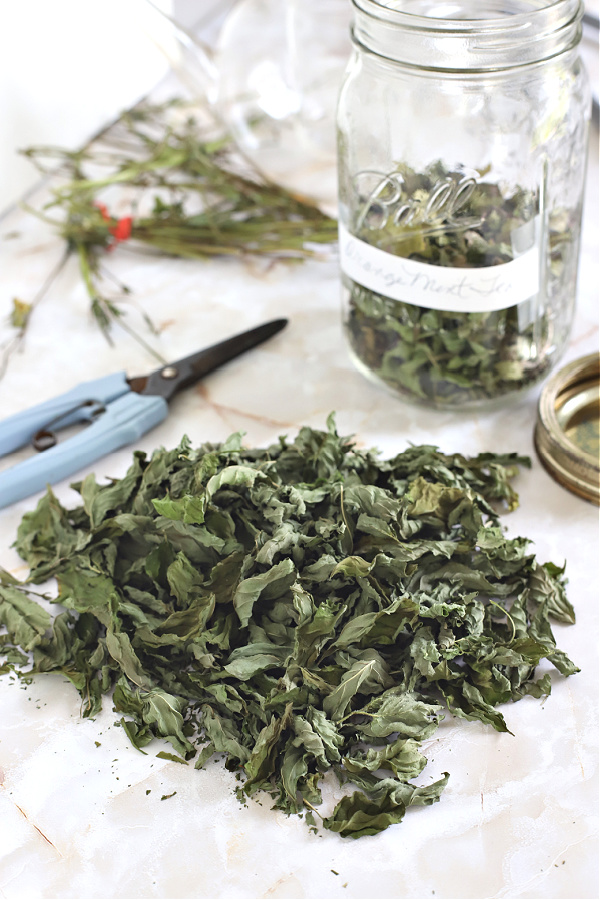 Transfer the thoroughly dry mint into clean, airtight containers. I like the way the tea leaves look in see-through canning jars but they also great in getting a tight seal that is so important in keeping the leaves at their best.
Transfer the thoroughly dry mint into clean, airtight containers. I like the way the tea leaves look in see-through canning jars but they also great in getting a tight seal that is so important in keeping the leaves at their best.
Avoid storing the mint leaves in paper, cardboard, plastic or wood containers because these materials absorb the essential oils from the mint.
Remember to label each container with the current date and, for best flavor, use the mint within a year.
NOTE: Check the containers for any signs of moisture in the days immediately after drying and storing the mint. If you detect moisture, remove from the containers and dry the mint again. Moisture can cause mold.
Try Amazon Prime 30-Day Free Trial
How to make Orange mint tea
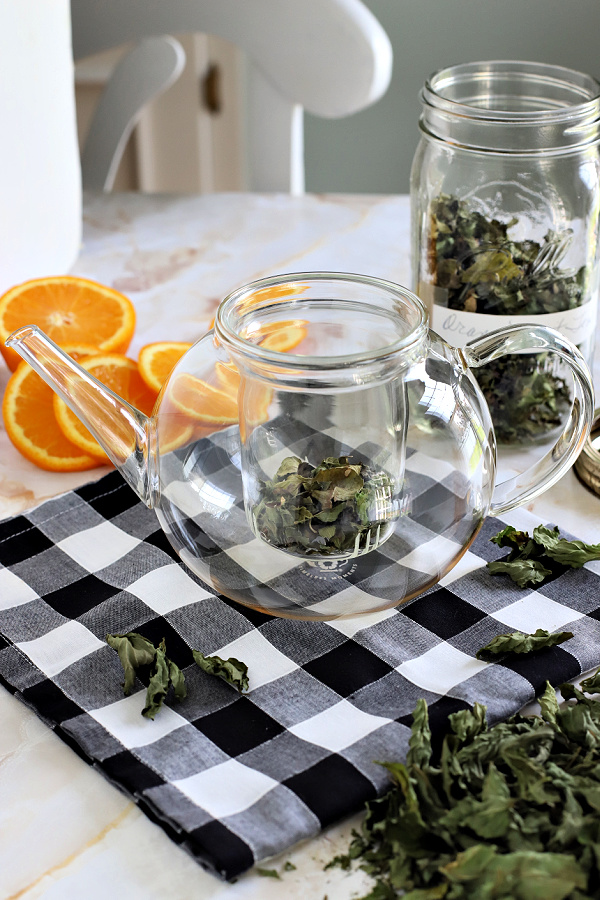 To make a pot of tea, place a kettle on to bring fresh, cold water just to a boil. Meanwhile, add about one tablespoon (more or less to your liking) of the dried mint leaves to a teapot.
To make a pot of tea, place a kettle on to bring fresh, cold water just to a boil. Meanwhile, add about one tablespoon (more or less to your liking) of the dried mint leaves to a teapot.
 Pour the hot water over the leaves and allow to steep for 3-4 minutes. I love this tea pot for its clear design, the removable strainer and that the flat-ish handle is comfortable and feels more secure when pouring than other pots I have had.
Pour the hot water over the leaves and allow to steep for 3-4 minutes. I love this tea pot for its clear design, the removable strainer and that the flat-ish handle is comfortable and feels more secure when pouring than other pots I have had.
 To avoid a bitter taste, do not leave the leaves in the tea for more than 5 minutes.
To avoid a bitter taste, do not leave the leaves in the tea for more than 5 minutes.
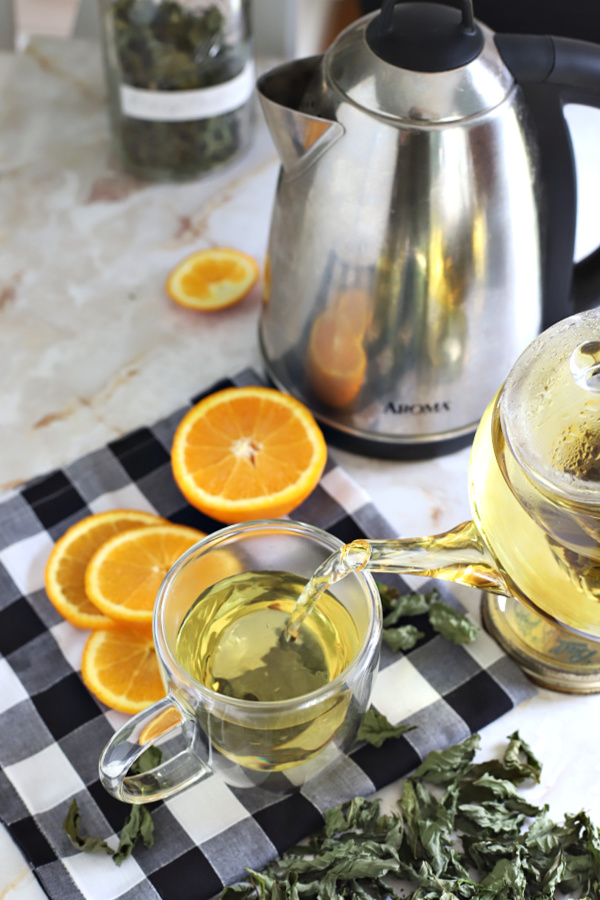 Pour a bright and lovely cup of mint tea. Garnish with an orange slice, if desired. Serve over ice during the hot summer months, and hot for comfort and relief in the cold winter months.
Pour a bright and lovely cup of mint tea. Garnish with an orange slice, if desired. Serve over ice during the hot summer months, and hot for comfort and relief in the cold winter months.


 Each issue of our Newsletter is timely and helpful and jam-packed with food, crafts, occasional DIY, gardening and faith resources. Relevant and seasonal posts to inspire and guide you with current trends. Available only to those who request it, so please accept our invitation to stay connected and join the Grateful Prayer Thankful Heart community. Just click the subscribe button below.
Each issue of our Newsletter is timely and helpful and jam-packed with food, crafts, occasional DIY, gardening and faith resources. Relevant and seasonal posts to inspire and guide you with current trends. Available only to those who request it, so please accept our invitation to stay connected and join the Grateful Prayer Thankful Heart community. Just click the subscribe button below.



Looks delicious, I hope our nursery carries orange mint. I love hot tea, even in summer.
Amalia
xo